The timeline is a powerful visual tool that allows people to understand and visualize the most significant events of a story, topic, or process. In this guide, we're going to break down everything you need to know about timelines, how they're built, their different uses, and the powerful Boardmix tool for creating professional and engaging timelines.
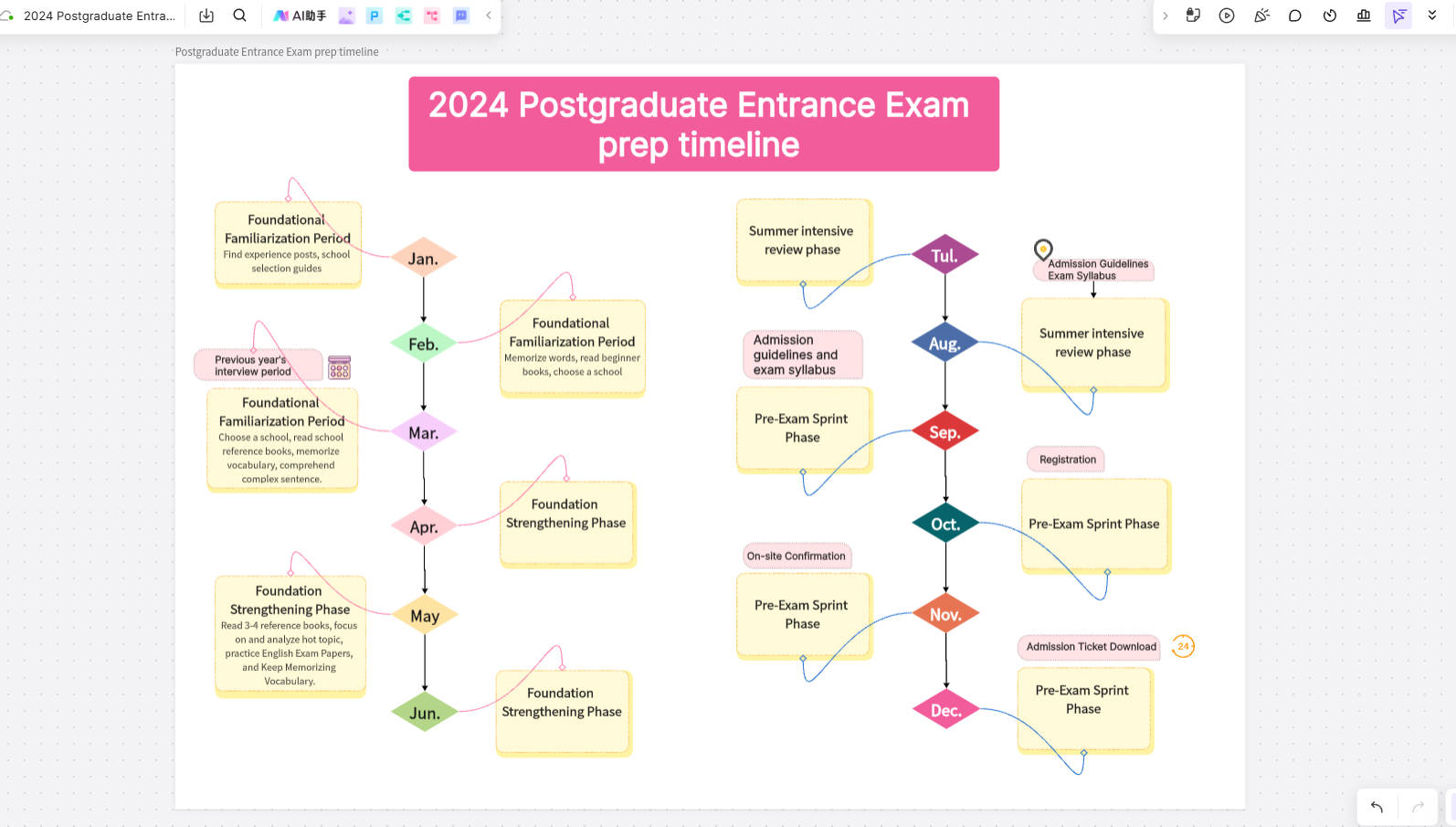
What is a Timeline?
A timeline is a graphical representation that allows you to visualize in a sequential and orderly manner the most relevant events of a specific topic or period. Essentially, it's a way of "mapping" time. In a timeline, the horizontal axis usually represents time, while events or facts are marked along this axis based on when they occurred. These events can be represented by marks, symbols, or illustrations, and described with brief explanatory texts.
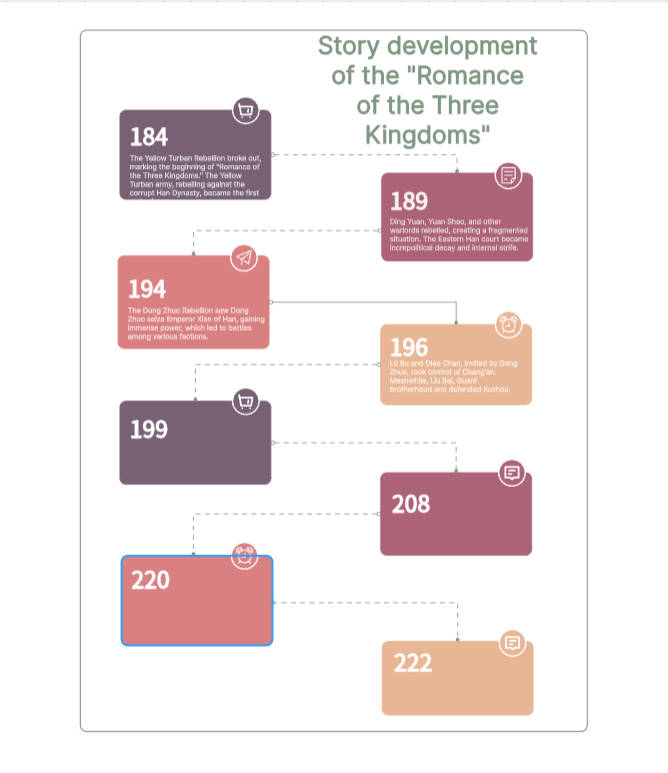
This tool is widely used in different fields, such as history, education, project planning, or even in the narrative of a story. A timeline can be as simple or complex as required. It can span from a few years to thousands of years, depending on the topic being discussed. For example, in the field of history, a timeline can show the key events that led to the formation of an ancient civilization, while in project planning, it can detail the key stages and milestones to be reached during the development of the project.
In addition, timelines are not only useful for visualizing past events, but also for projecting future events. In the business field, for example, they can be used to map out long-term strategies and foresee possible scenarios.
Origins of the Timeline
Timelines are not a new concept. In fact, their history can be traced back to ancient times, where historians and philosophers sought to understand and record the passage of time.
In early civilizations, people already used marks and drawings to record the passage of time and significant events. The earliest forms of timelines were simply lists of kings and pharaohs with the dates of their reigns. However, it was in the late 18th century, with the enlightenment and the development of historical sciences, that timelines began to take on their most well-known and popular format.
Types of Timelines
Timelines can take on multiple forms and styles, depending on their purpose. Some common examples are:
Horizontal Timeline
Horizontal timelines are perhaps the most familiar to most people. They are plotted on a horizontal axis, with events marked along the line at the point corresponding to their specific date or time. They are ideal for depicting a chronological sequence of events over a defined period of time.
Vertical Timeline
Vertical timelines, as the name suggests, are plotted vertically. While not as common as horizontal ones, they can be especially useful when trying to visualize a large number of events or time periods that vary in length.
Chronological Timeline
Chronological timelines are a type of timeline used to represent events in the order in which they occurred. They are plotted on an axis, either horizontal or vertical, and events are marked at specific points along the line that correspond to their exact date or time. This type of timeline is ideal for depicting the sequence of historical events or for charting the evolution of a process over time.
Circular Timeline
Circular timelines are great for depicting cycles or repeating events. They can be particularly useful in fields such as astronomy, where cycles are an integral part of the study.
Spiral Timeline
Spiral timelines are a variant of circular timelines and are used to depict progress or evolution over time. This type of timeline can be useful for visualizing growth or development in various fields, such as biology or history.
Interactive Timeline
In the digital age, timelines have evolved to incorporate interactive features, allowing users to click or scroll to explore events in more detail.
Basic Elements of a Timeline
All timelines contain certain key elements, although the presentation of these can vary depending on the purpose and format. Basic elements include:
Time points: These are the essential markers on any timeline, representing specific moments or periods of time. They could be years, decades, centuries, or even specific times of day.
Events: Each point on the timeline is usually associated with a particular event. This event could be as monumental as the signing of a constitution or as personal as the birth of a child.
Descriptions: Each event on the timeline should have a concise but informative description. This description provides details about the event and helps viewers understand its significance and context.
Baseline: This is the physical line that represents the passage of time on your timeline. Events and points are placed along this line in chronological order.
Direction: The direction of the timeline can be horizontal or vertical, depending on available space and personal preference. Some timelines may even be circular or zig-zag.
Categories (optional): On some timelines, events may be grouped into categories based on common themes or connections. For example, you could have one category for political events and another for cultural events.
Images or icons (optional): To make your timeline more visually appealing and informative, you can include images or icons related to each event.
How to Create a Timeline?
Creating a timeline can be a simple process, as long as you follow a few basic steps:
1. Identify the key events you want to include on your timeline. These can be important milestones, event dates, or significant moments that are relevant to the topic you are addressing. Make sure you have all the necessary information about each event, such as the exact dates and a brief description.
2. Decide on the format of your timeline. It can be vertical or horizontal, depending on the space you have available and how you prefer to display the information. You may also consider using charts or images to make your timeline more appealing and easier to understand.
3. Organize the events in chronological order. Start with the oldest event and work your way to the most recent. It is important that you maintain consistency in the way you present each event to avoid confusion.
4. Create timestamps for each event on your timeline. This can be as simple as writing the date next to each event, or you can opt for a more elaborate layout if you prefer.
5. Review your timeline to make sure there are no errors and that all events are represented correctly. Remember, the key to a good timeline is its clarity and accuracy.
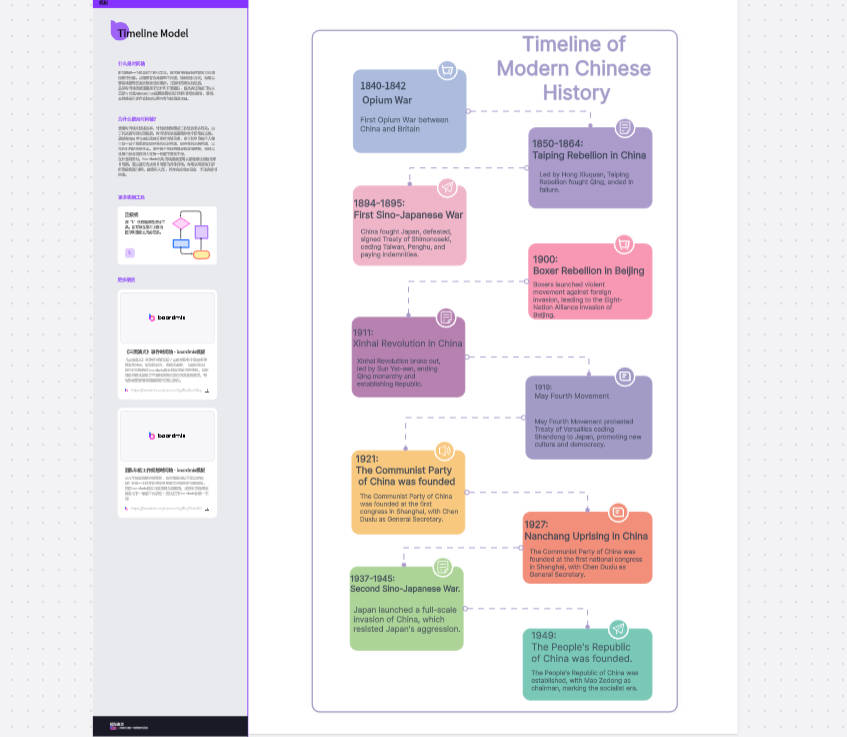
Effective Tool for Creating Timeline: Boardmix
Boardmix is an innovative project management tool renowned for its highly interactive features and user-friendly interface. One of the key features it offers is the ability to create stunning timelines, providing an efficient way to schedule, organize, and visualize project tasks over time. In this part, we will guide you through the steps on how to create a timeline in Boardmix.
Steps to create a timeline on Boardmix:
- First, you will need to log in to your Boardmix account. If you don't have one yet, head over to the Boardmix website and sign up for an account. Once done, log in to get started.
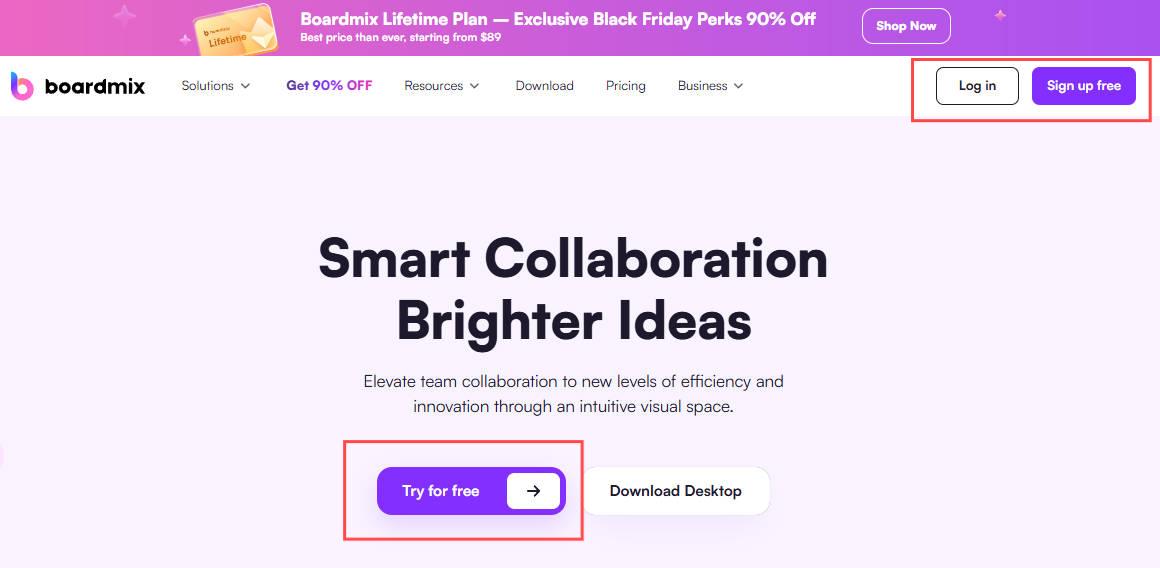
2. On your homepage, click the "New Board" button and a blank canvas will be created. Click "Templates" on the left sidebar and find a template that suits your needs.
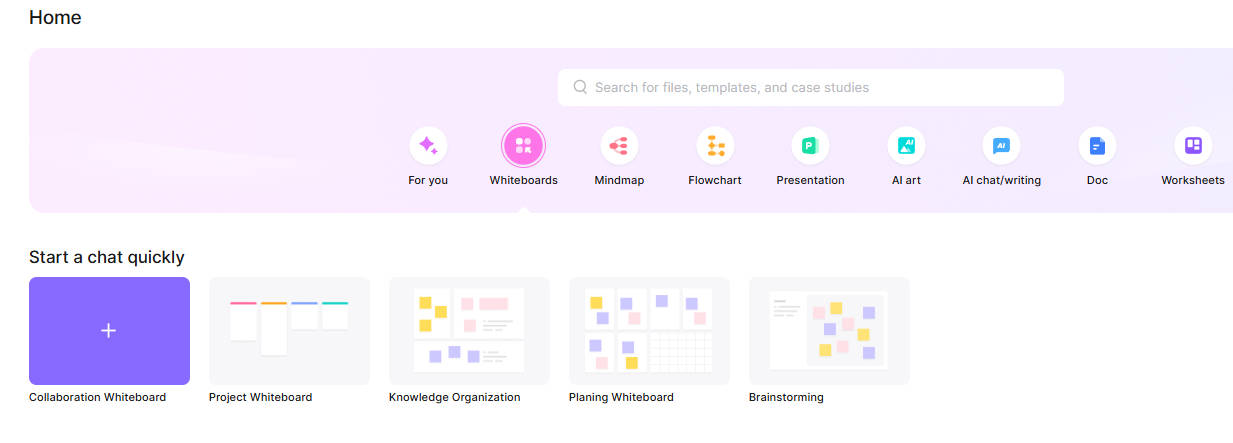

3. After creating a timeline, you can also start adding events. Click the + icon to add the same shapes.
In addition, Boardmix offers a variety of customization options to improve readability and visual appeal. You can adjust colors and labels, include dependencies of items, and even add relevant milestones or key events.
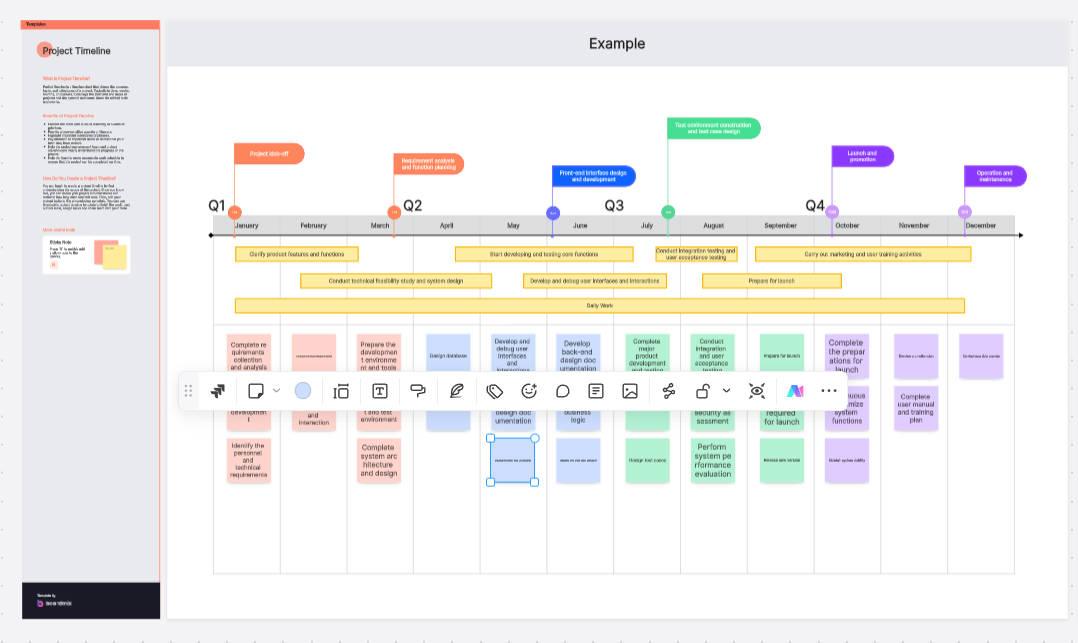
4. Share your timeline with your team members by clicking 'Share' and sending them a shareable link. They will then be able to view and contribute to the timeline.
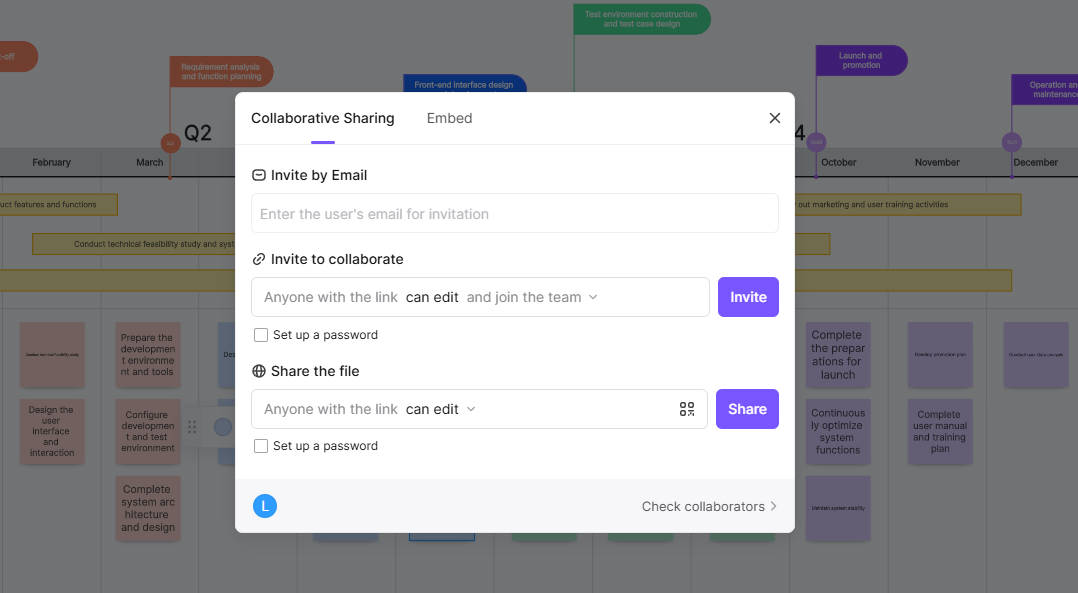
It's important to regularly update your timeline as tasks progress or new tasks are added. Boardmix makes this easy with its intuitive drag-and-drop interface.
Creating a timeline in Boardmix helps simplify project management by visualizing each phase of your project, ensuring timely completion and increasing overall productivity.
If you want to create a timeline in Powerpoint, you can check out How to Create a Graphic Timeline in PowerPoint: A Complete Guide
Or you can also create it in Word, visit How to Create a Timeline in Word - Full Tutorial
What is the Application of Timelines?
Timelines have a wide range of practical applications, including:
Education: Timelines are an invaluable educational tool. They allow students to visualize sequences of events, understand the relationship between different historical periods, and develop a sense of temporal perspective. Whether it's the evolution of ancient civilizations, scientific advances over the centuries, or the chronology of a novel, timelines can help consolidate learning and foster deep understanding.
History: Timelines are fundamental in the study of history. They allow you to track events and trends over time, offering a bird's-eye view of socio-political, economic, and cultural changes. By visualizing these changes on a timeline, we can better understand how the world as we know it today came to be.
Projects: In the workplace, timelines are essential for project management. They help organize tasks, set deadlines, and track progress toward goals. A clear timeline can be key to keeping a project on track and ensuring its success.
Genealogy: Timelines also have great value in genealogy. They allow us to trace family history across generations, uncovering family connections and hereditary patterns that may have remained hidden.
What are the Benefits of Using Timelines?
A timeline is a handy tool that allow us to clearly and accurately visualize the sequence of events over a given period of time. When applied in different areas, they offer many benefits, including:
Improving understanding of complex events: Timelines allow us to break down complex events into a series of smaller, more manageable events. By arranging these events on a timeline, we can better understand how they relate to each other and how one event led to another.
Facilitate memorization: By visualizing the sequence of events on a timeline, it is easier to remember the details and the order of events. This is especially useful in the educational setting, where timelines can help students remember important historical dates and events.
Promote critical thinking: Constructing a timeline requires careful thought about events and their sequence. This can promote critical and analytical thinking, as one must consider the relative importance of different events and how they interrelate.
Improve communication: Timelines are also excellent communication tools. They can be used to explain sequences of events to other people, which can be especially useful in professional or academic settings.
These are just a few examples of the power that timelines have to improve our understanding and communication of complex events. Whether we're studying history, planning a project, or simply trying to better understand an event or process, timelines can be an invaluable tool.
Conclusion
Timelines are an incredibly versatile tool that can help make sense of information and present it in a visually appealing way. Whether you're trying to follow the course of a historical event, plan a project, or simply organize your own life, timelines can be an invaluable tool. With Boardmix, you can have everything you need to start creating your own timelines.









